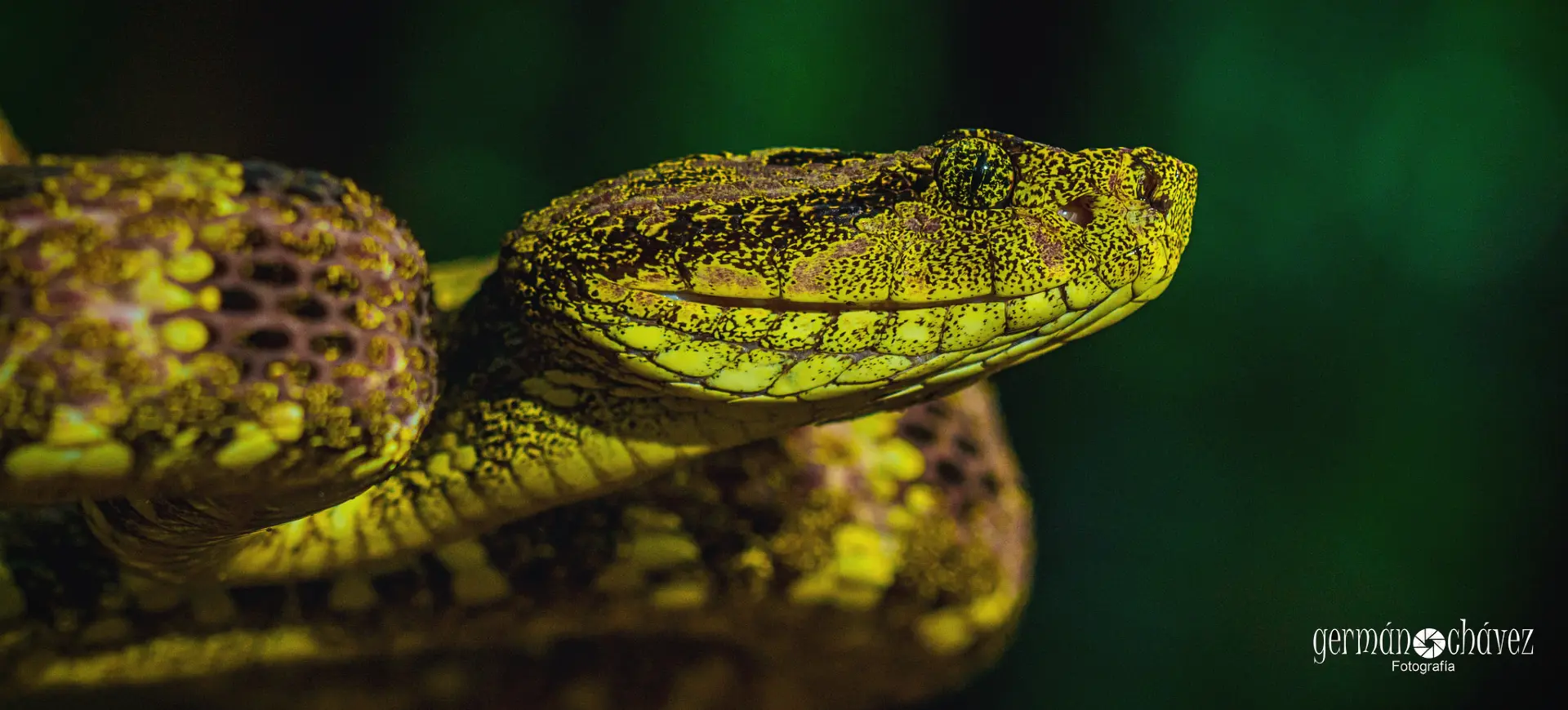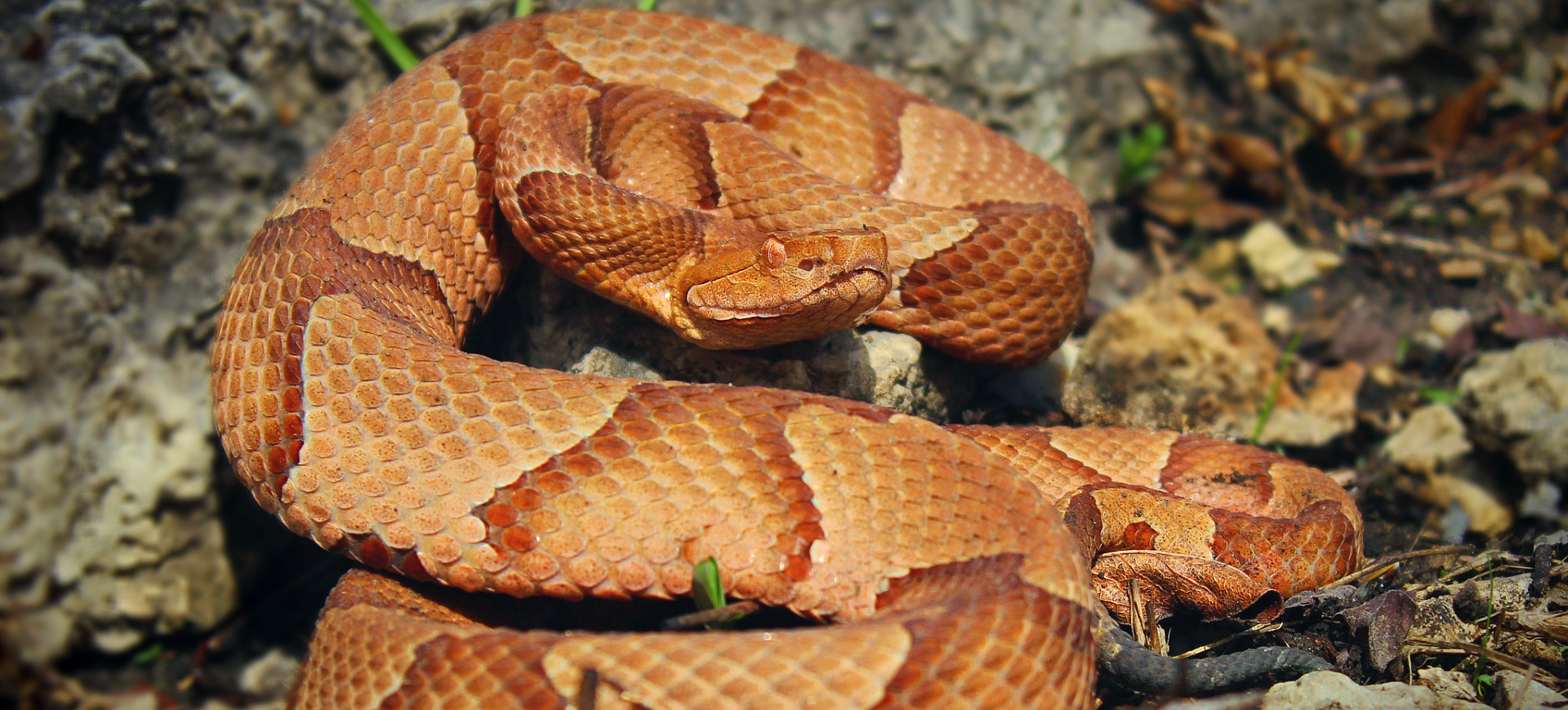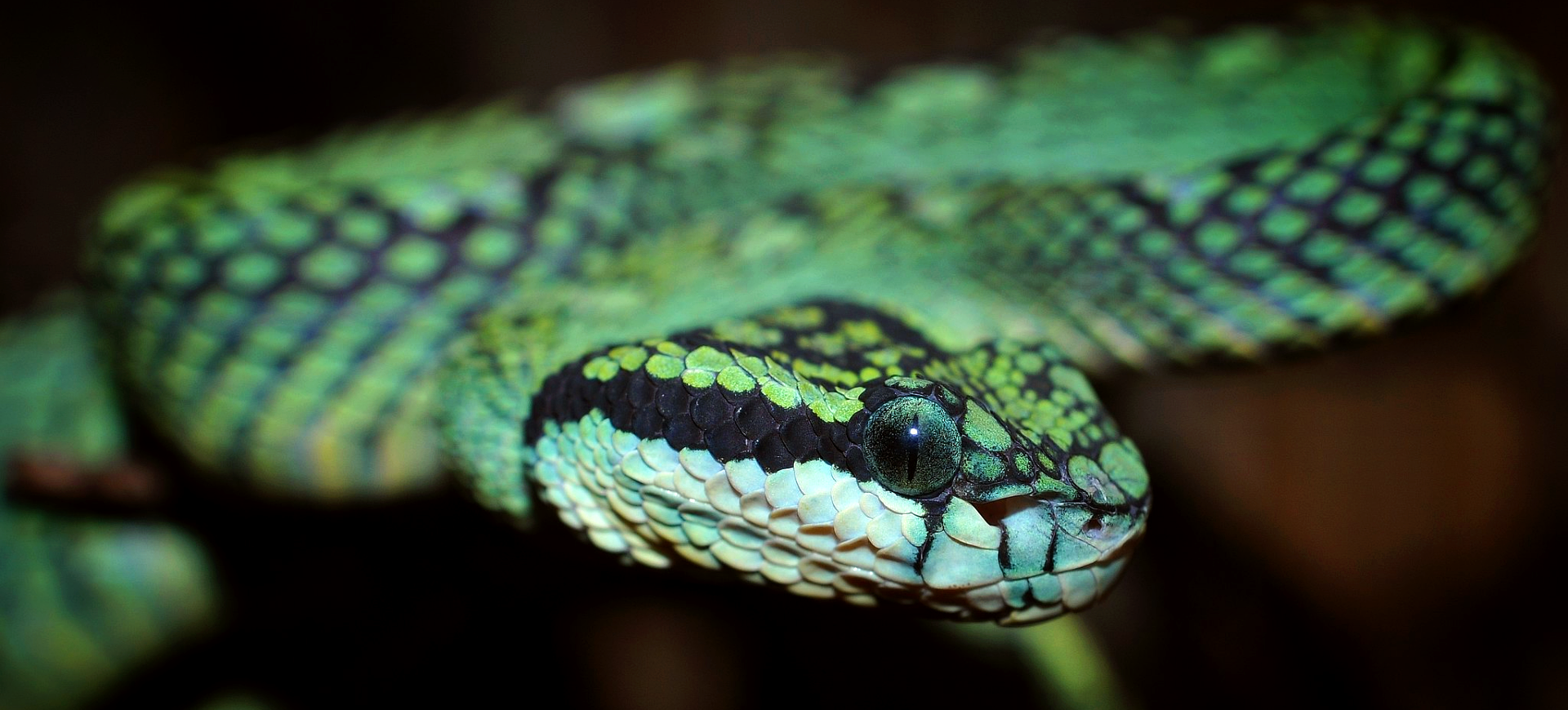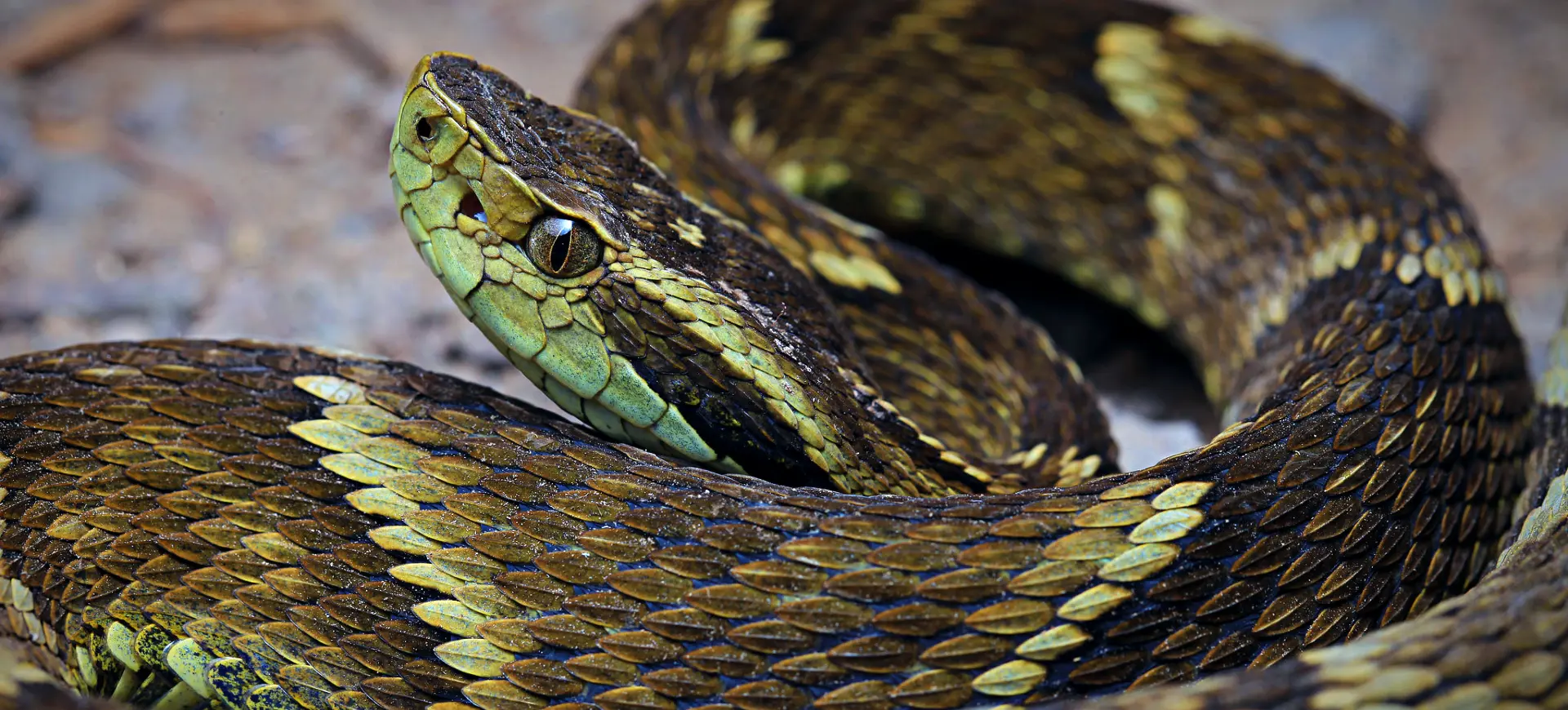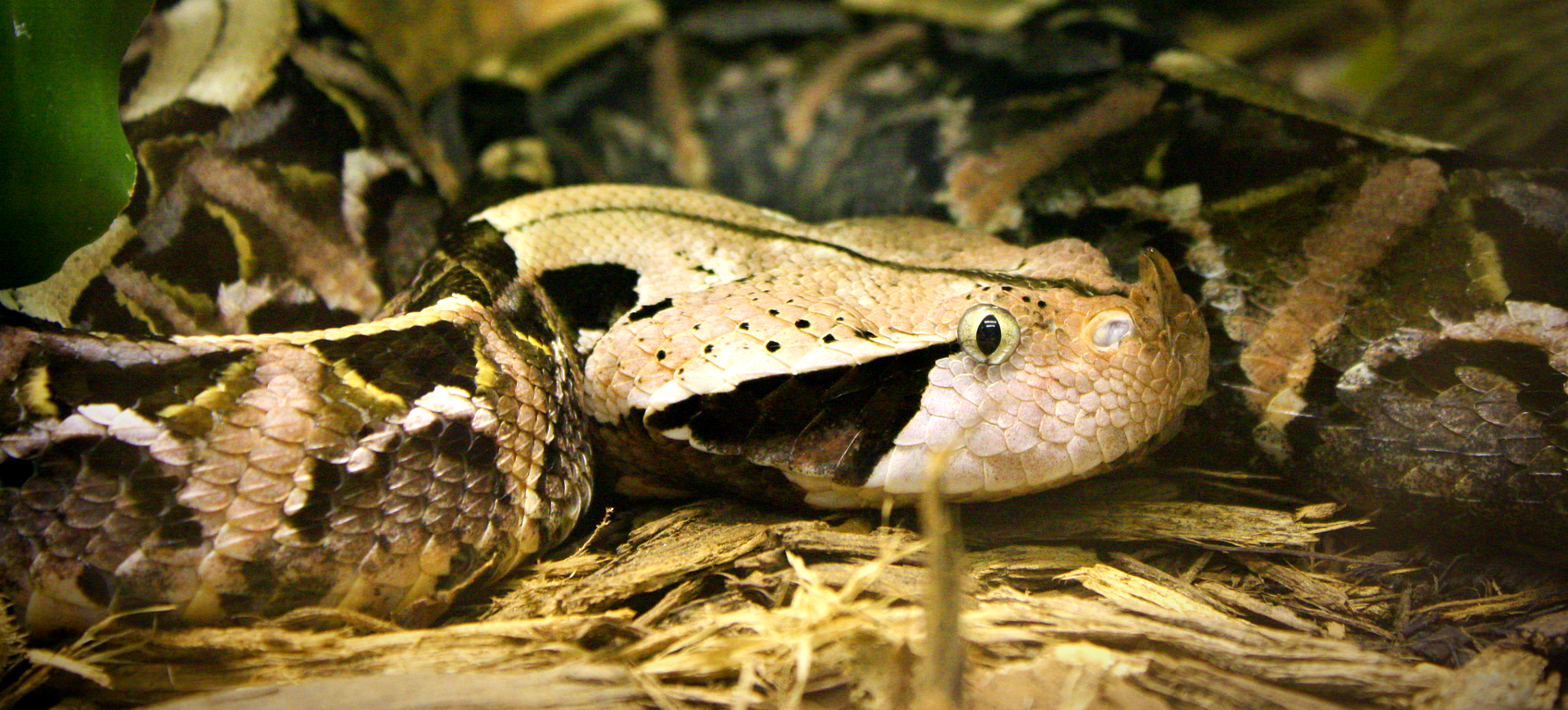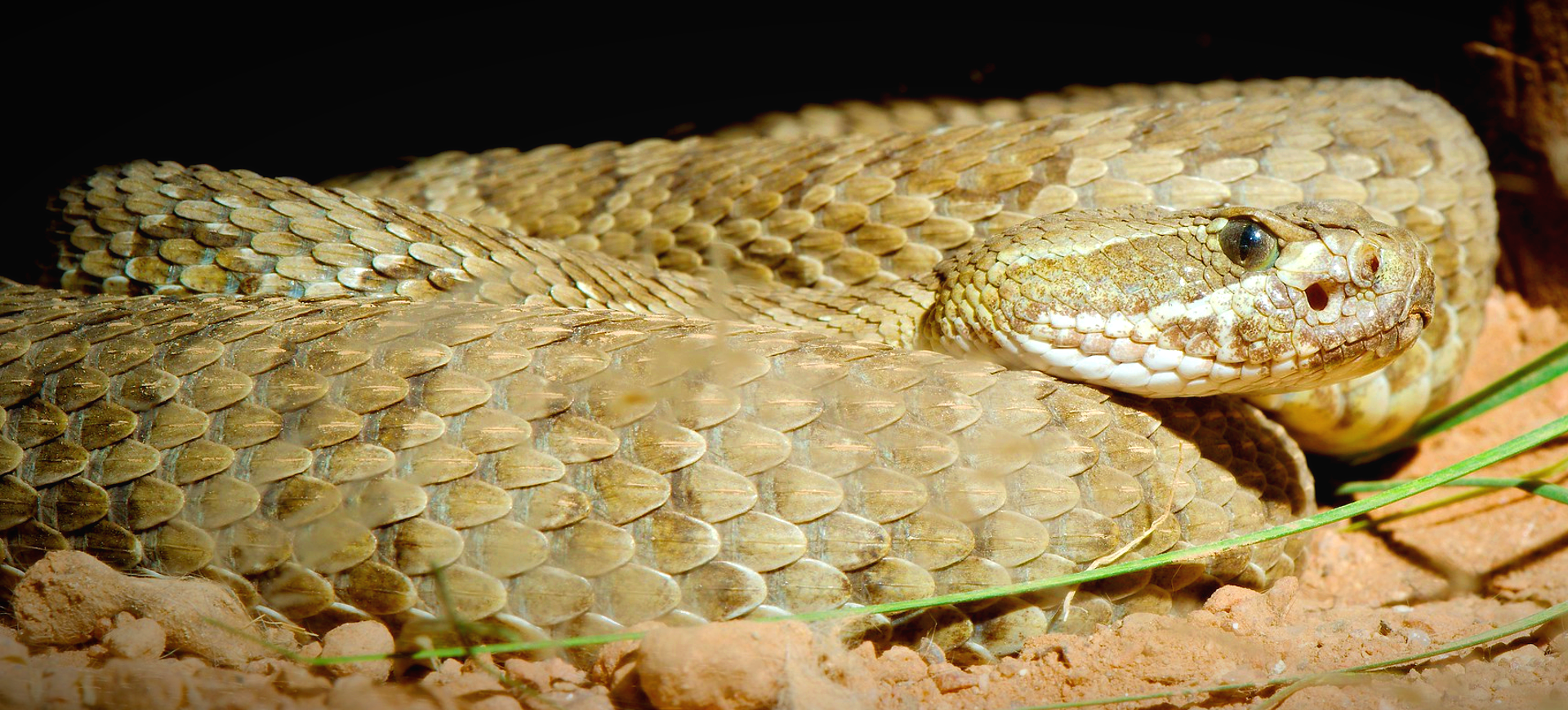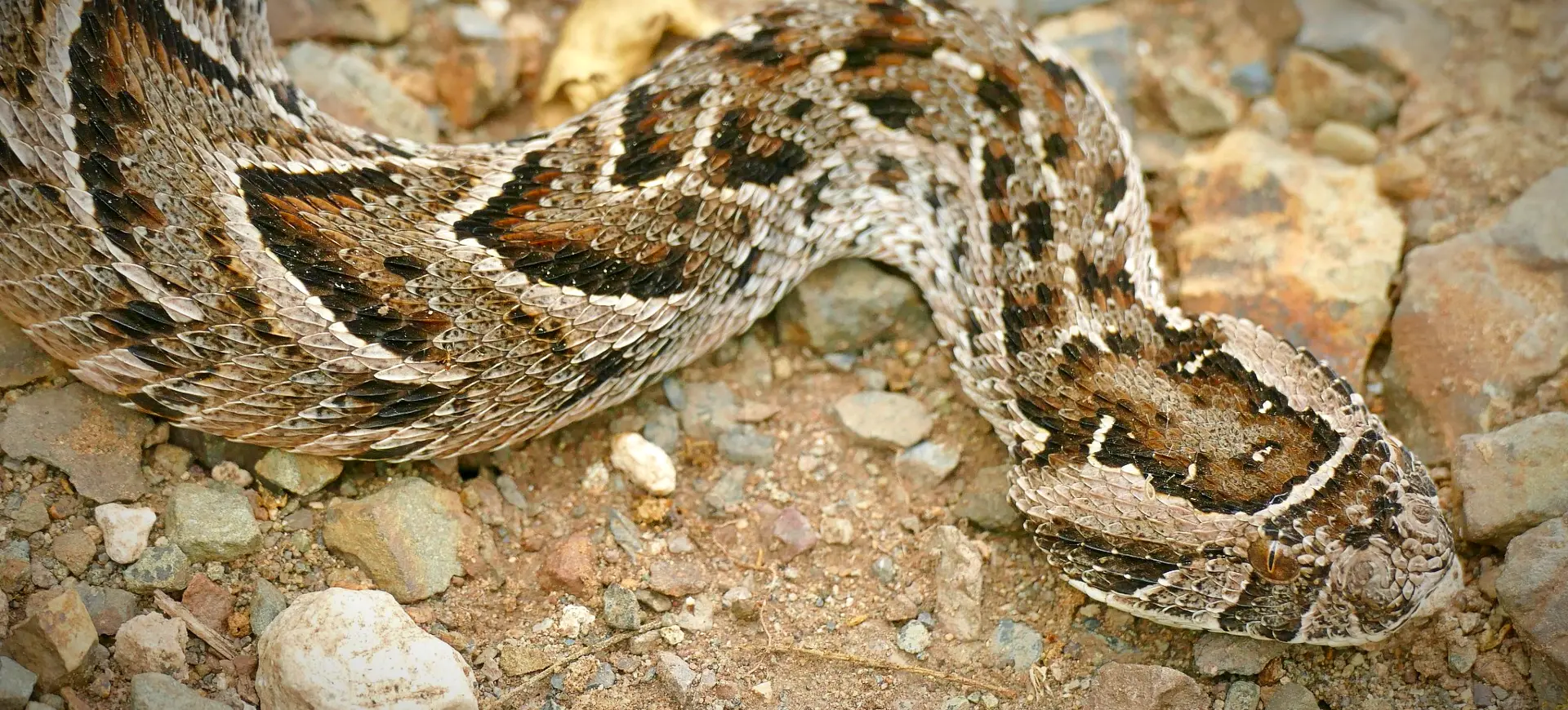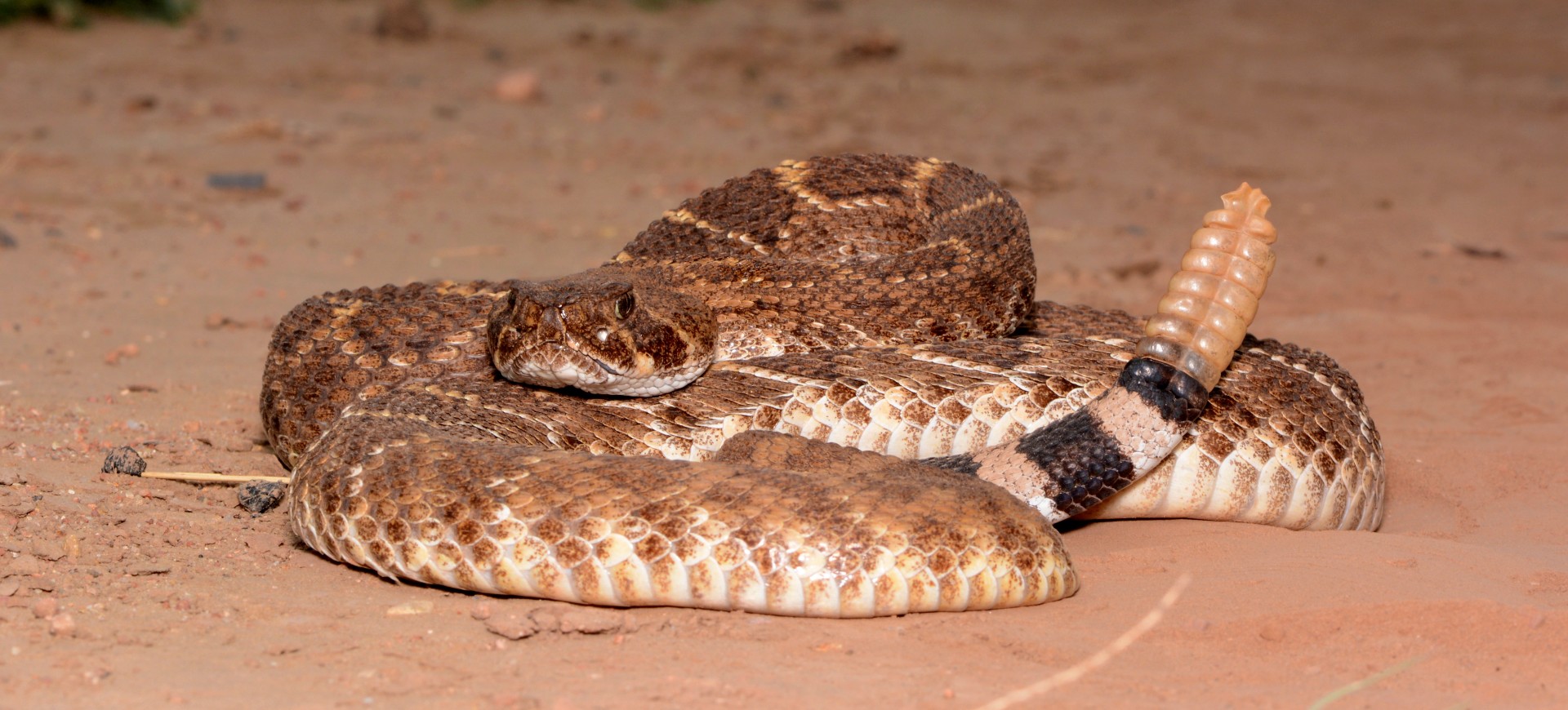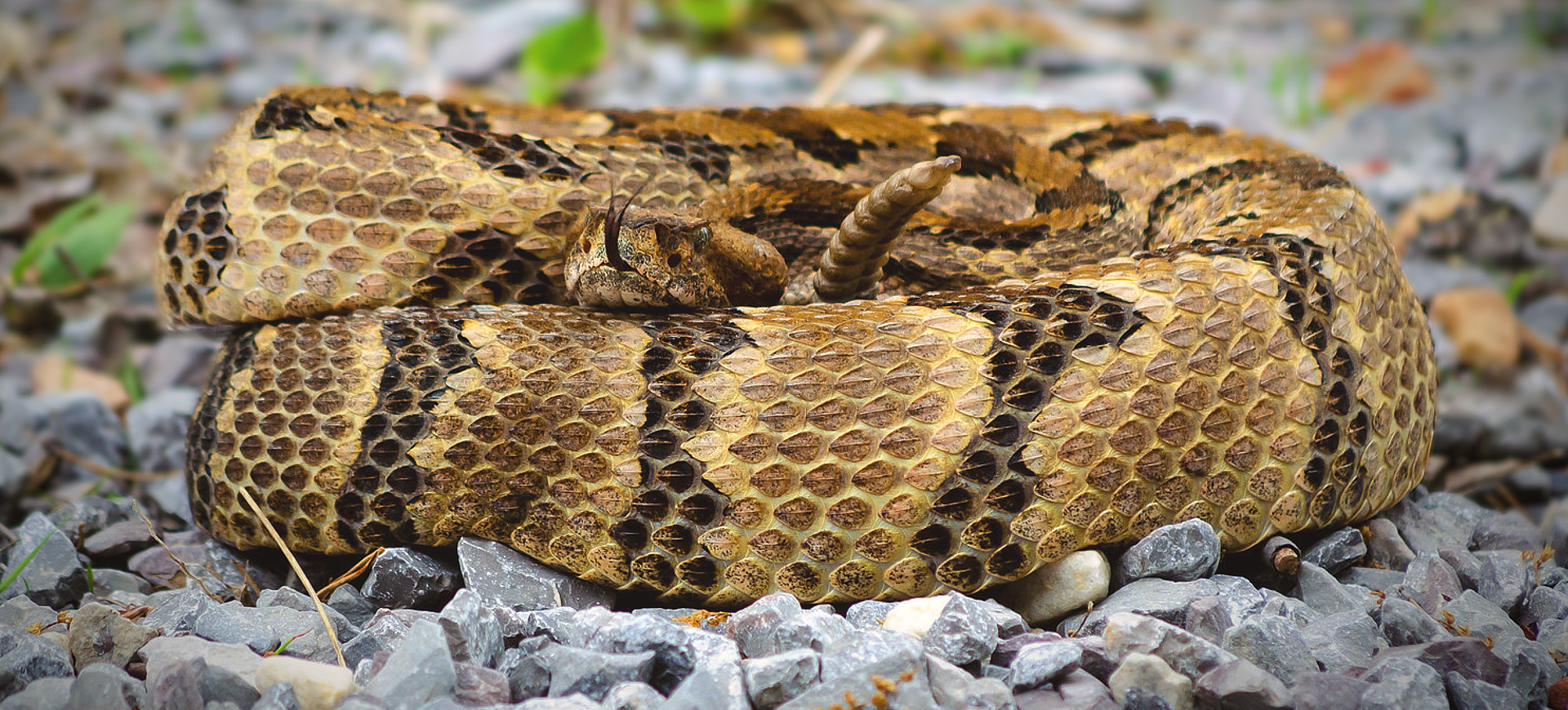Overview
Wagler’s Pit Viper, scientifically known as Tropidolaemus wagleri, is a venomous snake native to Southeast Asia. Characterized by its striking coloration and distinctive heat-sensing pits between the eyes and nostrils, this species is both feared and revered within its range. Females are typically larger and more vibrant than males, showcasing a variety of colors from green to yellow and even red, with males being more uniformly green. This arboreal snake spends most of its life in trees, preying on small mammals and birds with its potent hemotoxic venom.
Wagler’s Pit Viper is known for its unique reproductive behavior, where females give birth to live young, a feature not common among many snake species. With its cryptic coloring, the viper is well-adapted to blend into its lush forest environment, making it a formidable ambush predator. Despite its dangerous reputation, this species is relatively calm and often avoids confrontation unless provoked or threatened. Its nocturnal habits make it a less common sight, but it remains an intriguing subject of study for herpetologists.
The conservation status of Wagler’s Pit Viper is not fully understood, but habitat loss and the pet trade pose significant threats. Efforts to understand and conserve this species are ongoing, but its elusive nature and fragmented habitat make research challenging. Education about its role in the ecosystem and legal protection in certain areas are helping to mitigate some threats to its survival.
Taxonomy
Kingdom
Phylum
Class
Order
Family
Genus
Species
Type
Physical Description:
Wagler’s Pit Viper is known for its sexual dimorphism, with females being larger and more colorful than their male counterparts. Females can reach lengths up to 100 cm, while males typically grow to about 75 cm. They possess a prehensile tail that aids their arboreal lifestyle, allowing them to navigate and stabilize themselves among the trees. The viper’s head is distinct and triangular, a common trait among pit vipers. It has heat-sensing pits between the eyes and nostrils, enabling them to detect warm-blooded prey even in complete darkness.
The body of Wagler’s Pit Viper is robust and covered in keeled scales that provide texture and help with camouflage. Their coloration varies widely but often includes a striking pattern of bands and spots that can be green, yellow, red, or brown, aiding in blending with the dense foliage of their habitat. The eyes have vertical pupils, a characteristic of nocturnal predators, enhancing their night vision. Despite their fearsome appearance, they are relatively small compared to other viper species, making them less imposing but no less dangerous.

Lifespan: Wild: ~15 Years || Captivity: ~20 Years

Weight: Male: 0.5-1 lbs (0.2-0.5 kg) || Female: 1-2 lbs (0.5-1 kg)

Length: Male: 29.5 inches (75 cm) || Female: 39.4 inches (100 cm)
Characteristic:
Native Habitat:
Wagler’s Pit Viper thrives in Southeast Asia’s dense, humid rainforests. Their preferred habitat includes primary and secondary forests near streams or rivers. The canopy provides cover and ample hunting opportunities for these arboreal snakes, while the high humidity is essential for their skin and overall health. They are also sometimes found in plantations and gardens, leading to conflicts with humans.
The complex structure of the rainforest offers numerous microhabitats suitable for different stages of the viper’s life. Juveniles may stay lower to the ground where smaller prey is abundant, while adults may venture higher into the trees. The forest’s vertical stratification allows for a diverse diet and protects from predators. As deforestation and habitat fragmentation continue, the availability of these essential habitats is diminishing, posing a significant threat to the species.
Climate Zones:
Biogeographical Realms:
Continents:
Diet:
Diet & Feeding Habits:
Wagler’s Pit Viper is a carnivore with a diet primarily consisting of small mammals and birds. Its arboreal nature allows it to ambush prey from above, using its heat-sensing pits to detect warm-blooded animals even in total darkness. Once prey is within reach, the viper strikes quickly, injecting potent hemotoxic venom that incapacitates and begins digesting the victim. This efficient hunting strategy is particularly effective in the dense, forested environments where these snakes reside.
Wagler’s Pit Viper is often fed a diet of rodents and occasionally small birds in captivity, mimicking their natural diet. The feeding frequency varies with age and size, but generally, adult vipers are fed every 1-2 weeks. Juveniles may eat more frequently due to their faster growth rate. The viper’s metabolism is slow, allowing it to survive long periods without food, a useful adaptation for the sometimes scarce availability of prey in the wild.
Mating Behavior:
Mating Description:
Wagler’s Pit Viper exhibits an ovoviviparous mating system, where females produce eggs within the body and give birth to live young. This is relatively rare among snakes and gives the offspring a greater chance of survival in the unpredictable rainforest environment. Mating typically occurs after the rainy season when food is abundant, allowing females to gain the necessary resources for gestation.
The male viper will court the female through tactile and chemical cues. If receptive, the female will allow the male to align his body with hers for copulation. Gestation lasts for several months, after which the female will give birth to a litter of live young. The number of offspring can vary, but litters of 10-20 are common. Once born, the juveniles are independent and receive no further care from the mother.
Reproduction Season:
Birth Type:
Pregnancy Duration:
Female Name:
Male Name:
Baby Name:
Social Structure Description:
Wagler’s Pit Viper is solitary, with individuals coming together only for mating. They are territorial, with each snake having a home range that patrols and hunts within. These territories can overlap, but direct interactions are rare outside of the mating season. Their solitary nature is an adaptation to the sparse prey availability in the rainforest, reducing competition among individuals.
These vipers exhibit site fidelity within their territory, often returning to the same resting spots. They are primarily nocturnal, hunting at night and resting during the day. Their social interactions are limited, and much about their social structure remains unknown due to the challenges of observing them in the wild.
Groups:
Conservation Status:
Population Trend:
The population of Wagler’s Pit Viper is not well-documented, and their elusive nature makes accurate surveys challenging. What is known is that their populations are fragmented and possibly declining due to ongoing habitat loss and degradation. They are also collected for the pet trade, which further reduces wild numbers.
In areas where their habitat is protected, populations appear to be stable. However, their numbers are likely decreasing in regions where deforestation and human encroachment are prevalent. The lack of comprehensive data makes it difficult to assess the overall population trend, but the factors impacting their survival are clear and present significant challenges for conservation.
Population Threats:
Habitat loss is the primary threat to Wagler’s Pit Viper. As forests are cleared for agriculture, logging, and urban development, the viper’s hunting grounds and living spaces are reduced and fragmented. This decreases their available habitat and isolates populations, leading to reduced genetic diversity and increased vulnerability to disease and environmental changes.
Additionally, the pet trade poses a significant threat. Their striking appearance makes them popular in the exotic pet market, leading to overcollection in some areas. This is exacerbated by a lack of enforcement of wildlife trade regulations in many parts of their range. Climate change is also a concern, as it can alter the forest ecosystems they depend on and affect prey availability.
Conservation Efforts:
Conservation efforts for Wagler’s Pit Viper are somewhat limited due to a lack of data on their population and distribution. However, protecting their rainforest habitat is crucial and benefits not only the viper but a myriad of other species as well. Establishing and enforcing protected areas can help ensure the survival of these habitats.
Education and awareness campaigns can help reduce the demand for the pet trade and promote coexistence with local communities. Research is also essential to better understand their ecology, population dynamics, and the impacts of threats they face. Efforts to breed them in captivity for conservation and educational purposes are ongoing but must be coupled with wild conservation strategies for long-term success.
Additional Resources:
Fun Facts
- Wagler’s Pit Viper is named after the German herpetologist Johann Georg Wagler.
- Females exhibit a wider range of colors than males, including vibrant greens, yellows, and even reds.
- Their heat-sensing pits are so sensitive they can detect a temperature change of just 0.003 degrees Celsius.
- Unlike many snakes, Wagler’s Pit Viper gives birth to live young rather than laying eggs.
- They are known to be relatively calm and may not bite unless they feel threatened or provoked.
- The viper’s venom is hemotoxic, causing tissue damage and disrupting blood clotting.
- Their prehensile tail helps them stabilize and maneuver through the trees with ease.
- In some regions, they are known as “Temple Vipers” due to their presence in forested temple grounds.
- They can go for months without eating due to their slow metabolism.
- Despite their fearsome reputation, they are crucial in controlling rodent and bird populations in their ecosystems.





